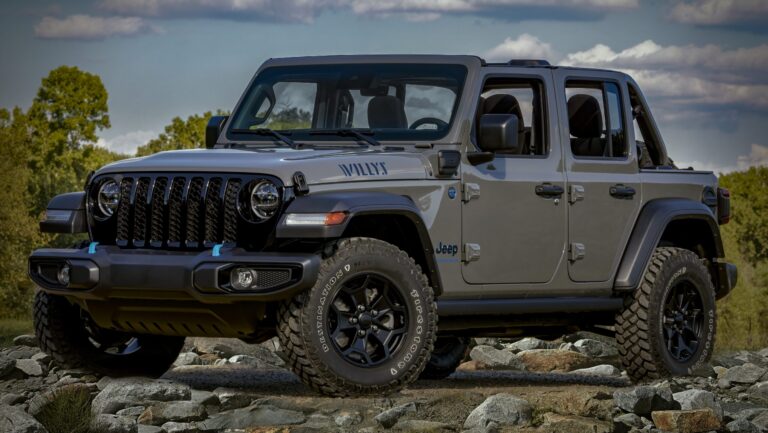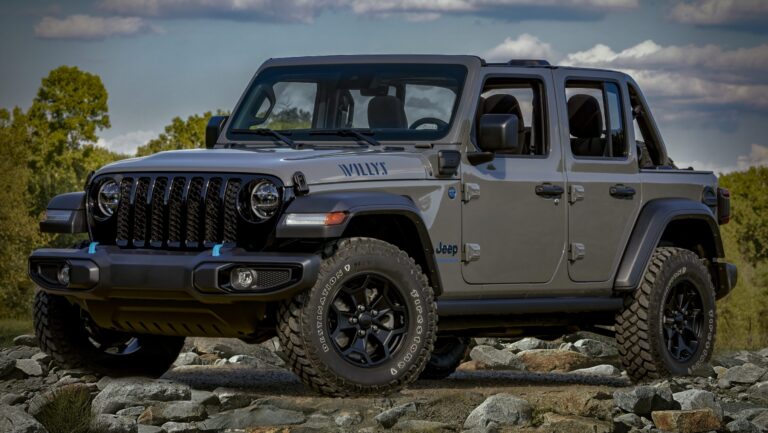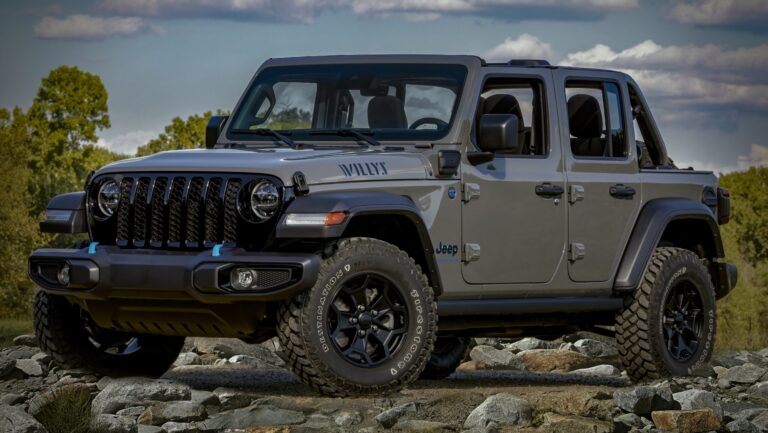2000 Jeep Wrangler Dana 44 Axles For Sale: A Comprehensive Buyer’s Guide
2000 Jeep Wrangler Dana 44 Axles For Sale: A Comprehensive Buyer’s Guide jeeps.truckstrend.com
For any serious Jeep Wrangler TJ enthusiast, the pursuit of enhanced off-road capability often leads to one critical upgrade: the Dana 44 axle. While the 2000 Jeep Wrangler TJ came standard with a robust Dana 30 front axle and often a weaker Dana 35 rear axle, the optional Dana 44 rear axle was a highly sought-after factory upgrade. Finding these axles for sale today, especially specifically from a 2000 model year, represents an opportunity to significantly boost your Jeep’s durability and performance without resorting to more complex aftermarket solutions. This guide will delve into everything you need to know about acquiring these prized components.
Why the Dana 44? Understanding Its Appeal for the TJ Wrangler
2000 Jeep Wrangler Dana 44 Axles For Sale: A Comprehensive Buyer’s Guide
The Dana 44 axle is a staple in the off-road community, revered for its superior strength and reliability compared to its smaller sibling, the Dana 35. For the 2000 Jeep Wrangler TJ, the Dana 44 was an optional rear axle upgrade, typically found on models equipped with the tow package or specific trim levels. The Dana 30 remained the standard front axle across all TJ models, with the exception of the later Rubicon models (2003-2006) which featured Dana 44s front and rear.
The primary reasons for upgrading to a Dana 44 are clear:
- Increased Strength: The Dana 44 features a larger ring and pinion, stronger axle shafts (30-spline compared to the Dana 35’s 27-spline), and a more robust housing. This translates directly to a higher load capacity and greater resistance to breakage, especially when running larger tires or tackling challenging terrain.
- Durability for Larger Tires: While a Dana 35 can handle up to 31-inch tires with care, the Dana 44 is comfortably capable of supporting 33-inch tires and, with minor upgrades like chromoly shafts, can reliably handle 35-inch tires.
- Wider Aftermarket Support: The Dana 44 benefits from an enormous aftermarket ecosystem, offering a vast array of lockers, limited-slip differentials, gearing options, and upgraded shafts, making future modifications easier and more affordable.
- Peace of Mind: For those who push their Jeeps hard on the trails, the Dana 44 provides a significant boost in confidence, reducing the likelihood of catastrophic axle failure miles from civilization.

Identifying and Verifying 2000 TJ Dana 44 Axles
When searching for 2000 Jeep Wrangler Dana 44 axles, precise identification is crucial. While the front axle on a 2000 TJ will almost certainly be a Dana 30 (unless previously swapped), the rear axle is the one you’ll be specifically looking for.
Here’s how to identify a Dana 44 rear axle on a TJ:
- Differential Cover Shape: The most obvious visual cue is the differential cover. A Dana 44 cover is typically an irregular oval shape with a somewhat pointed bottom, secured by 10 bolts. In contrast, the Dana 35 has a more rounded, rectangular cover with a "bulge" near the bottom, secured by 10 bolts. The Dana 30 front axle cover is more rounded, also with 10 bolts.
- Axle Tube Diameter: While less definitive without direct comparison, Dana 44 axle tubes are generally thicker than Dana 35 tubes.
- Production Tag: Some Dana axles will have a metal tag attached to one of the differential cover bolts. This tag will often have "D44" or "44" stamped on it, along with gearing information. However, these tags are often missing or illegible on older, used axles.
- Factory Gearing: Factory 2000 TJ Dana 44s often came with 3.73 or 4.10 gearing, depending on the transmission and engine. While this isn’t an identification method, it’s good to know what ratios were common.

It’s important to note that a "2000 Jeep Wrangler Dana 44 Axle For Sale" typically refers to the rear axle. If a seller claims to have a front 2000 TJ Dana 44, it’s almost certainly an aftermarket swap or a Dana 44 from a later Rubicon model adapted for a 2000 TJ, which is a more involved and usually more expensive proposition.

Key Considerations When Buying Used Dana 44 Axles
Purchasing used axles requires careful inspection and due diligence to ensure you’re getting a component that will serve you well.
-
Overall Condition Assessment:
- Rust: Surface rust is common and usually not a concern, but look for deep, pitting rust that could compromise structural integrity, especially around welds and mounting points.
- Bent Tubes: Visually inspect the axle tubes for any signs of bending or bowing. A bent tube can cause vibrations, tire wear, and issues with axle shaft alignment. This is often hard to spot without specialized tools, but severe bends might be visible.
- Damaged Housing: Check the differential housing itself for cracks, severe impact damage, or signs of improper welding repairs.
- Fluid Leaks: Look for oil residue around the differential cover, pinion seal, and axle seals. Minor leaks might be easily fixable, but significant leaks indicate potential wear.
-
Gearing:
- Ratio: Ask the seller about the installed gear ratio. Common factory ratios were 3.73 or 4.10. If you’re running larger tires, you might need to re-gear both axles to a lower ratio (e.g., 4.56, 4.88, 5.13) to restore power and drivability. Ensure the front axle’s ratio matches the new rear axle’s ratio exactly, or you’ll experience drivetrain binding.
- Backlash/Pattern: If possible, remove the differential cover to inspect the gear teeth for wear or chipping. While you can’t check backlash without a dial indicator, visual inspection can reveal gross issues.
-
Locker/Limited Slip:
- Some factory Dana 44s came with a Trac-Lok limited-slip differential. Ask if the axle has one and if it’s functional. Aftermarket lockers (e.g., ARB, Detroit) are a bonus but will significantly increase the price.
-
Axle Shafts:
- The factory Dana 44 rear shafts are 30-spline. Ask if they are the original shafts or if they’ve been upgraded to chromoly aftermarket shafts, which are significantly stronger. Inspect the U-joints (if applicable, on front axles) and splines for wear.
-
Brakes:
- Inspect the condition of the brake rotors, calipers, and pads. While these are wear items and typically replaced, knowing their condition helps in budgeting.
-
Mounting Brackets:
- Ensure all control arm mounts, track bar mount, shock mounts, and spring perches are intact, not bent, and free of severe rust or damage. Verify they are factory TJ mounts; sometimes, axles are pulled from different vehicles or have been modified.
-
Price Negotiation:
- The price of a used Dana 44 axle varies wildly based on its condition, included components (gears, locker, shafts), and the seller’s urgency. Be prepared to negotiate, especially if the axle requires significant work.
The Buying Process: Where to Find and What to Ask
Finding a 2000 Jeep Wrangler Dana 44 rear axle can be a treasure hunt.
- Online Marketplaces: Facebook Marketplace, Craigslist, eBay, and dedicated Jeep forums (e.g., JeepForum.com, WranglerForum.com) are excellent starting points. Use specific search terms like "TJ Dana 44," "Jeep Wrangler Dana 44 rear," or "2000 TJ axle."
- Local Salvage Yards/Junkyards: Call around to local salvage yards specializing in Jeeps or 4x4s. You might get lucky, but often these are pulled quickly.
- Off-Road Shops: Some 4×4 shops might have used parts from customer upgrades or know where to source them.
What to Ask the Seller:
- Donor Vehicle: Ask if they know the year and model of the donor Jeep. If possible, get the VIN.
- Reason for Removal: Why was the axle removed? Was the Jeep wrecked? Was it upgraded?
- Mileage: If known, the mileage on the donor vehicle can give you an idea of wear.
- Running Condition: Was the axle working correctly when removed? Any issues (noise, leaks)?
- Pictures: Request detailed pictures of all angles, especially the differential cover, brake components, and mounting points.
- Inspection: Always try to inspect the axle in person before committing to purchase.
Installation and Upgrade Potential
Once you’ve secured your Dana 44 axle, the installation process, while straightforward for an experienced mechanic or DIY enthusiast, involves several steps:
- Removal of Old Axle: Disconnecting driveshaft, brake lines, control arms, shocks, and springs.
- Installation of New Axle: Bolting up the new Dana 44.
- Brake Work: Connecting brake lines, bleeding brakes.
- Driveshaft Compatibility: Ensure your driveshaft is compatible. In most cases, the stock driveshaft will work, but if the pinion angle changes significantly with a lift, you might need a new one.
- Gearing Synchronization: If the new Dana 44’s gearing doesn’t match your front Dana 30, you must re-gear both axles to the same ratio. This is critical for preventing drivetrain damage.
The beauty of the Dana 44 lies in its upgrade potential. Once installed, you can further enhance its capabilities:
- Chromoly Axle Shafts: For even greater strength, especially with larger tires.
- Lockers: Air lockers (ARB), automatic lockers (Detroit Locker), or selectable lockers dramatically improve off-road traction.
- Trussing: Welding a steel truss onto the axle tubes provides additional rigidity and prevents bending under extreme stress.
- Heavy-Duty Differential Covers: Thicker covers offer better protection for the differential.
Estimated Pricing Guide for 2000 Jeep Wrangler Dana 44 Axles For Sale
The price of a used 2000 Jeep Wrangler Dana 44 rear axle can vary significantly based on condition, included components, and market demand. This table provides a general estimate:
| Condition Category | Axle Type | Included Components | Gearing | Price Range (USD) | Notes |
|---|---|---|---|---|---|
| Fair | Rear D44 | Housing, shafts, diff | Stock | $600 – $900 | Visible rust, minor leaks, unknown internal condition. Likely needs new seals, bearings, possibly re-gear. |
| Good | Rear D44 | Housing, shafts, diff, brakes (used) | Stock | $900 – $1,400 | Minor surface rust, no major leaks, believed to be in working order. May have higher mileage. |
| Excellent | Rear D44 | Complete, good brakes | Stock | $1,400 – $2,000 | Minimal rust, no leaks, verified working condition, low mileage or recently serviced. |
| Premium | Rear D44 | Complete, new brakes, aftermarket shafts, locker | Custom | $2,000 – $3,500+ | Fully built or recently rebuilt, chromoly shafts, installed locker (e.g., ARB, Detroit), custom gearing. |
| Front D44 Swap | Front D44 | Housing, shafts, diff, brakes | Varies | $1,500 – $3,000+ | Typically from a Rubicon or custom build. Requires significant modification to fit a 2000 TJ. |
- Note: Prices are estimates and can fluctuate based on location, seller urgency, and specific included features. "Stock" gearing usually refers to 3.73 or 4.10.
Frequently Asked Questions (FAQ)
Q: Are 2000 TJs always Dana 44 in the rear?
A: No, the Dana 44 rear axle was an option for the 2000 Jeep Wrangler TJ. The standard rear axle was the Dana 35. You need to verify its presence by checking the differential cover or axle tag.
Q: Can I put a front Dana 44 from a Rubicon on a 2000 TJ?
A: Yes, it’s a popular swap, but it’s not a direct bolt-in. Rubicon Dana 44 front axles are wider than non-Rubicon TJ Dana 30s and require modifications like longer control arms, new track bar, and potentially wider fenders or wheels with different backspacing. The steering linkage may also need adjustment.
Q: What’s the biggest tire size I can run on a factory 2000 TJ Dana 44?
A: A factory Dana 44 rear axle can typically handle up to 33-inch tires reliably. With upgraded chromoly axle shafts, it can safely support 35-inch tires for most off-road conditions. However, running larger tires will almost certainly necessitate re-gearing both axles to maintain drivability and reduce strain on the drivetrain.
Q: What’s the main difference between a Dana 35 and a Dana 44 axle?
A: The primary differences are strength and internal components. The Dana 44 has a larger ring and pinion, a stronger differential housing, and thicker 30-spline axle shafts compared to the Dana 35’s 27-spline shafts. This makes the Dana 44 significantly more robust and less prone to failure, especially under stress from larger tires or aggressive off-roading.
Q: Do I need to re-gear if I install a Dana 44 axle?
A: You must re-gear if the Dana 44 axle you install has a different gear ratio than your existing front axle. Running mismatched gear ratios will cause severe damage to your transfer case and other drivetrain components, especially when operating in 4WD. Even if the ratios match, you might choose to re-gear both axles to a lower ratio (e.g., 4.56, 4.88) to compensate for larger tires and restore engine power and efficiency.
Conclusion
Acquiring a 2000 Jeep Wrangler Dana 44 axle, particularly the coveted rear unit, is a strategic investment for any TJ owner looking to significantly upgrade their vehicle’s off-road prowess. While it requires diligent searching and careful inspection, the benefits in terms of strength, durability, and future upgrade potential are immense. By understanding the key identification points, knowing what to look for in a used axle, and being prepared for the installation process, you can confidently navigate the market and equip your TJ with the robust foundation it deserves for years of adventurous trails. A well-chosen Dana 44 isn’t just a part; it’s an enabler for more aggressive lines, larger tires, and unparalleled confidence on the toughest terrain.




